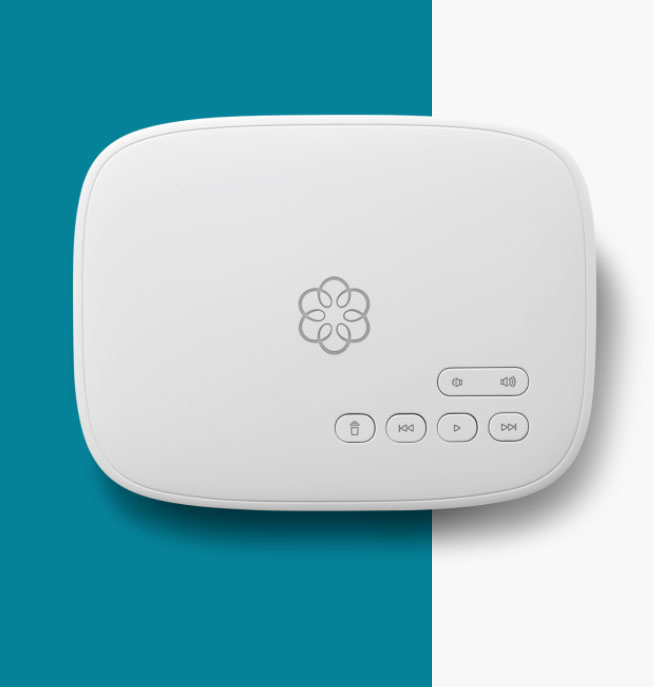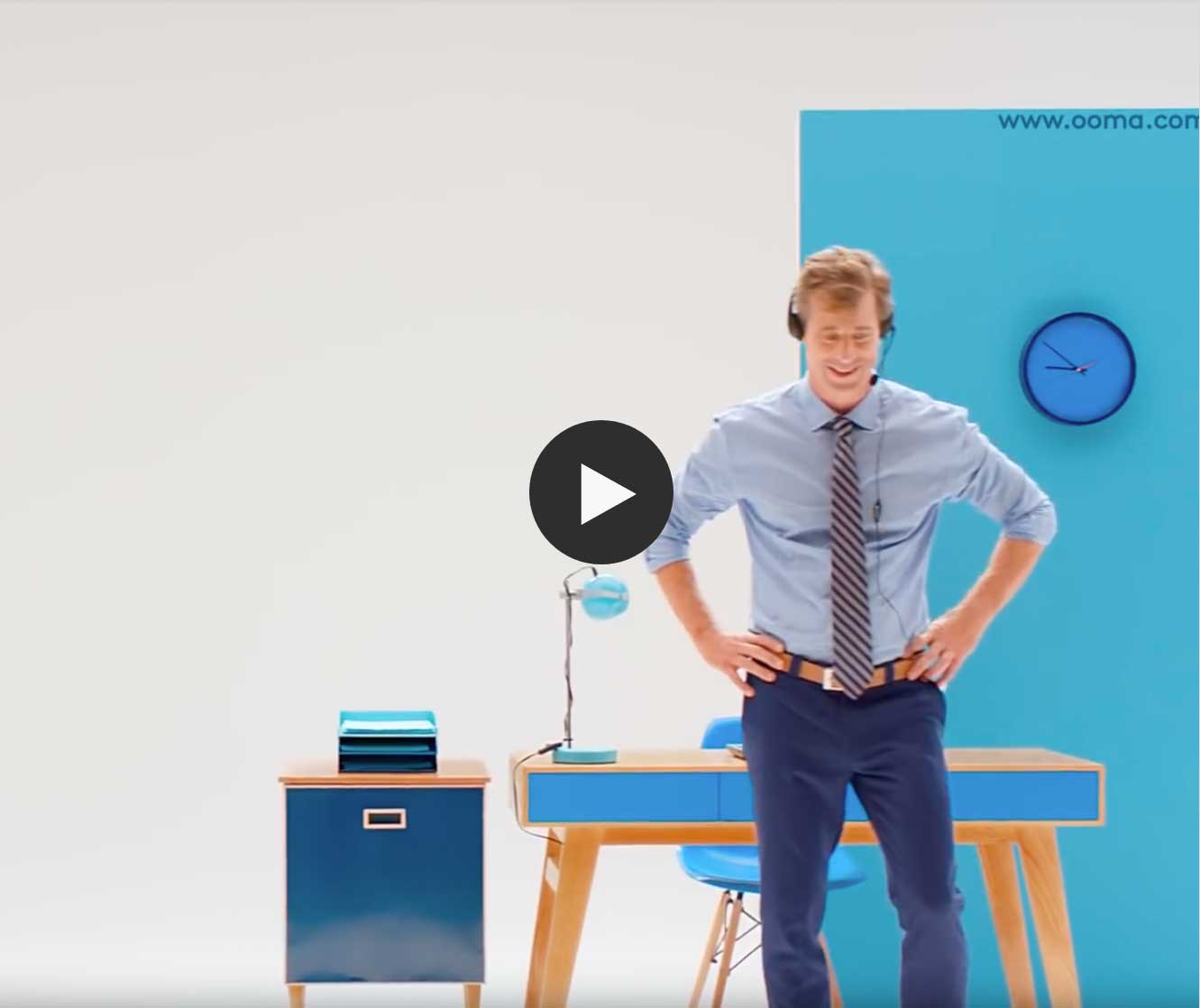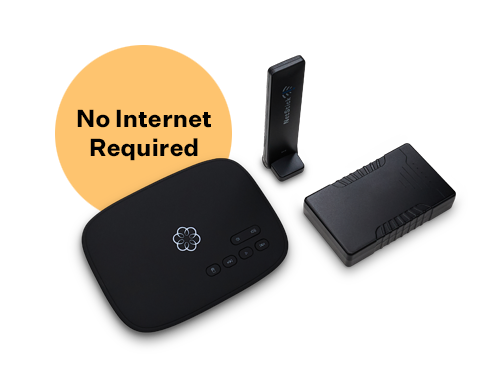With Ooma’s basic home phone service, the monthly cost for voice service is effectively $0 (you only pay taxes and fees). Since you’re not paying the full monthly landline fee, you avoid the rising cost burden of legacy copper-based service.

Home phone service with affordable hardware.
Ranked #1 Phone Service
- Phone service – $0.00/mo*
- Ooma Telo White –
$79.99 - + FREE SHIPPING
- + RISK-FREE 30-DAY RETURN
*You pay applicable monthly taxes and fees. Check here.
Ooma Telo is a device that provides the cheapest home phone services while still giving you all of the features you’re accustomed to with a traditional landline.
All you need to do is connect the Ooma Telo device to your high-speed internet connection, and you can start making home phone calls. All you pay are applicable taxes and fees. Ooma comes with all of the standard features you would expect: caller-ID, call waiting, Bluetooth capabilities, call logs, cheap international calling, voicemail, and 911 calling and 911 alerts.
Every call comes with Ooma PureVoice™ technology to ensure clear calls and fewer dropped calls. And, Ooma Telo is also integrated with Amazon Alexa for hands-free calling. Learn more about Ooma and how you can get our award-winning home phone service today!
Features Included with Ooma Basic:
911 and 911 Alerts
Ooma forwards your address to 911 dispatchers during emergencies, and you’ll also receive a text or email alert when 911 is called.
Low-Cost International Calling
Make affordable international calls starting at just 1.4 cents per minute, or choose the Ooma World Plan for easy calling to over 60 countries.
Transfer Your Number
You can easily bring your phone number with you to Ooma for a one-time fee of $39.99. Check here to see if your number can be ported.
The Utmost Voice Clarity
Ooma PureVoice™ HD technology delivers crisp acoustic performance, whether you’re calling another Ooma user or HD network.
2-month free trial of Ooma Premier
Every Ooma system comes with a 2-month free trial of Ooma Premier, which includes features like free number porting, for just $9.99/month.
Easy Setup and Activation
With Ooma’s easy setup, most customers can start making free calls in less than 15 minutes. Watch Video.
Watch Ooma Telo in action in these featured TV ads:
Check out our customer reviews:
Based on 2,519 reviews
Home Phone FAQs
With Ooma’s basic service, you receive unlimited U.S. calling, caller-ID, call waiting, voicemail, and E-911 capability. All with crystal-clear call quality thanks to Ooma’s PureVoice™ HD technology.
No long-term contract is required. You simply purchase the Ooma hardware (one-time) and then pay minimal monthly taxes/fees. There’s no monthly landline rental.
Yes. You can transfer (port) your current number to Ooma for a fee so you don’t have to change your number.
Families often find that a home phone adds reliability and convenience that cell phones can’t always match. With Ooma, everyone in the household can share one easy-to-remember home number, and can make and receive calls if cell phones are lost, dead, or turned off. If you need to call home, it’s also easier to call one central number rather than systematically call one person at a time.
Ooma uses your internet connection, not cell towers — so it’s great for areas with poor mobile coverage. As long as you have a stable internet connection, you’ll enjoy clear, reliable phone calls, even in places where cell service drops out.
Yes. With Ooma’s Linx devices, or HD cordless handsets, you can place phones in multiple rooms. It’s perfect for families who want a phone in the kitchen, home office, or bedrooms without running ugly new wiring all over the place.
Traditional phone companies charge high monthly line fees and long-distance costs. Ooma eliminates those — your monthly cost is only taxes and fees, and you can enjoy unlimited nationwide calling plus optional affordable international rates.
Despite widespread mobile use, many homeowners opt to keep their landline phone due to safety reasons. Given the reported problems with traditional cell phone service providers and their inconsistencies with 911 dispatchers, it's understandable. Let's walk through what happens when you dial 911 from a landline vs. a cell phone.
- Landlines and 911: When you dial 911 from a traditional landline phone, the dispatchers automatically see the exact location of the address, so help is sent immediately to your home address.
- Cell phones and 911: When you dial 911 from a cell phone, GPS-enabled technology is implemented first to grab your location. It can take a few minutes for the dispatcher to get the correct longitude and latitude, which can delay the emergency response. With older cell phones that are not equipped with GPS technology, your exact location may not ever be pinpointed. This means that your exact location must be given to the 911 dispatcher verbally - which is not always possible in an emergency.
How VoIP works with 911
Ooma's VoIP phone service offers the 911 functionality you'd expect from a landline phone. However, it's important to note that you must provide a valid address within your country of purchase when you set up your device, and update your address with the device if you move into a new home. With Ooma's 911 service, emergency calls are routed to your local dispatcher instead of a national call center, and Ooma automatically relays your street address information to emergency services.
Ooma also offers a home security system with an app that allows mobile phone access to your home number, meaning you can take your home phone on the go. The app lets you dial 911 remotely, so even if you are across town and an emergency is detected in your home, dispatchers will be sent to your home address. Learn more about Ooma's Remote 911 feature by watching the related video below.
To get more details about how Ooma works with 911 services, read our extended FAQs.
Ooma Telo is a device that provides free and low-cost home phone service and home security using your high-speed internet. With the Telo, you can get advanced calling features and more connected services that aren't offered by traditional landlines. To get started, all you need is:
-
A one-time purchase of an Ooma Telo
-
A high-speed internet connection
-
A desire to save money
With Ooma, your Telo really is like a smart phone for your home. To learn more about Ooma Telo and Ooma's home phone service, click here for an extended overview of our features and service tiers.
Ooma Basic and Ooma Premier are two distinct service tiers that offer different features. Regardless of whether you choose Basic or Premier service, you can enjoy unlimited free* calling in the U.S. and Canada (all you pay are taxes and fees), as well as voicemail access, call waiting, call logs and PureVoice technology that ensures crystal-clear calls.
However, Premier offers a suite of additional home phone features, including:
- Custom and anonymous call blocking
- Receiving incoming calls on the Ooma Mobile App
- Call forwarding
- Backup number
- 3-way conference calling
- Integration with Google Voice, Dropbox, Amazon Alexa, and more
In fact, it only costs less than $10 a month to have access to more than 20 industry-leading features. To learn more about the differences between Ooma Basic and Ooma Premier, check out this FAQ page that takes a closer look at the two offerings.
Home phone services utilizing VoIP use cloud phones which connect callers using the internet rather than a traditional landline service. By using Voice Over Internet Protocol (VoIP) technology, companies like Ooma provide multiple home phone options: you can place calls not only from standard VoIP phones but also supported iOS and Android devices through the Ooma app and a wifi connection.
What does this mean for customers? More flexibility and mobility with your home phone service. Better yet, with the Ooma home phone service you still get all of the features you love like voicemails, caller-ID, call waiting, call blocking, and more - but it costs much less thanks to an easy DIY installation, free unlimited calling (all you pay are taxes and fees), and no contract.
Ooma uses PureVoice HD technology to give you crystal-clear calling and excellent voice quality. In addition, the Ooma Telo is not just another phone, it’s an intelligent platform that provides an entire suite of services to your home, including:
-
Nationwide calling, voicemail, call-waiting and 911 service
-
Optional Premier service with advanced features including the most comprehensive blacklisting to block telemarketers and other unwanted callers
-
Mobile app calling
-
Connections with smart home devices like Nest and Amazon Echo
-
A complete smart home security system with Remote 911
For a list of enhanced Ooma Telo features, check out our features page - we have a lot more on the way.
Ooma Telo White
Get crystal-clear nationwide calling for free. All you pay are applicable monthly taxes and fees.Ooma Telo –
Ooma Telo + HD3 Handset
Get the perfect starter pack for free home phone service. Just pay applicable taxes and fees.Ooma Telo HD3 –
Ooma Telo LTE
Stay in touch during an outage with wireless phone service with battery backup, and an LTE connection.Check coverage.




